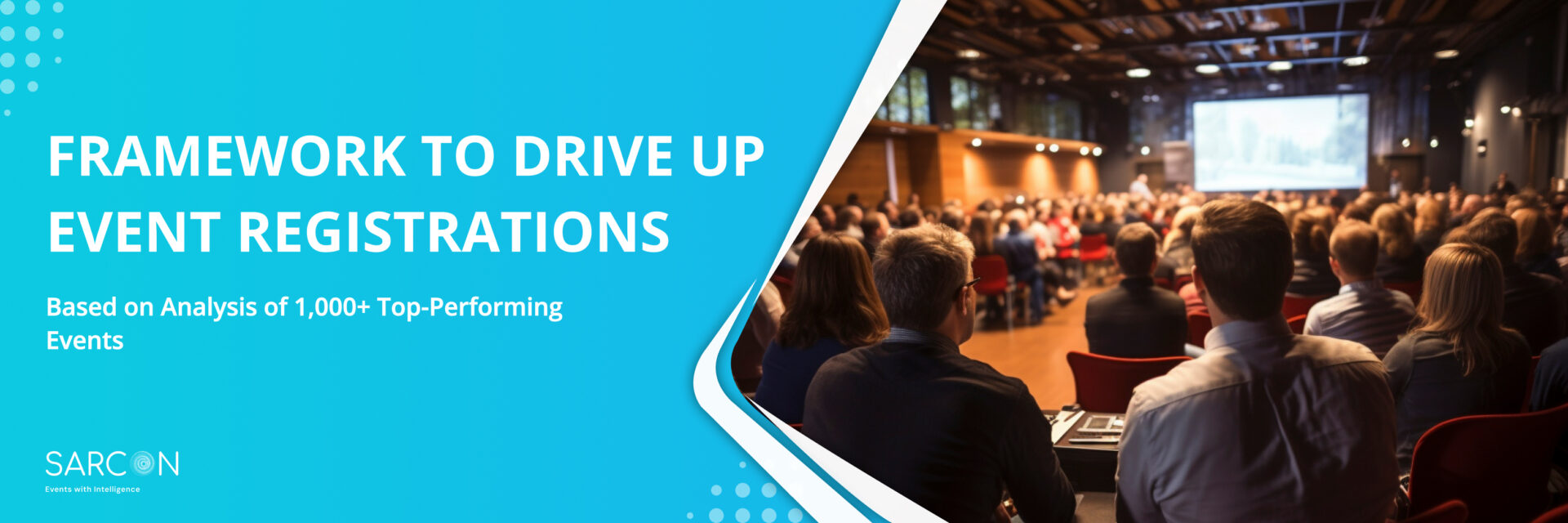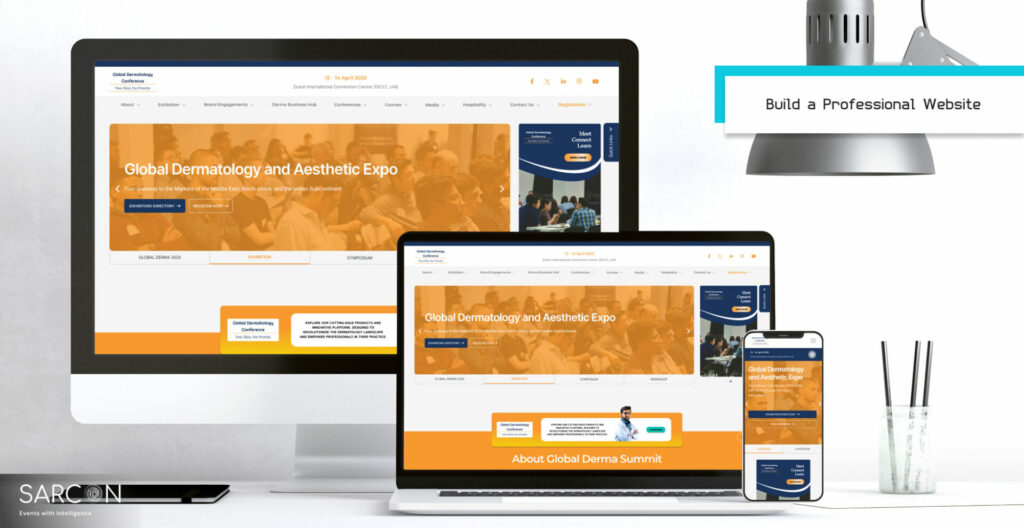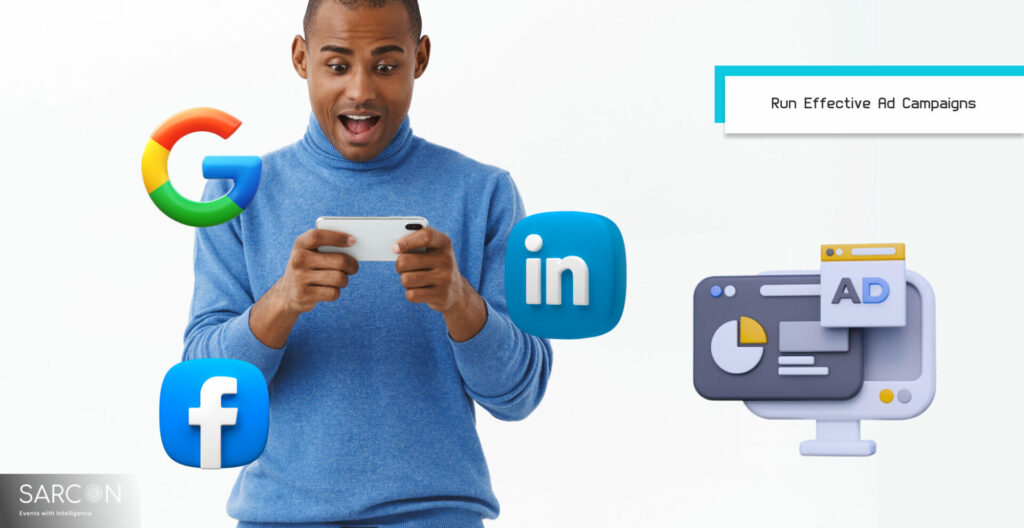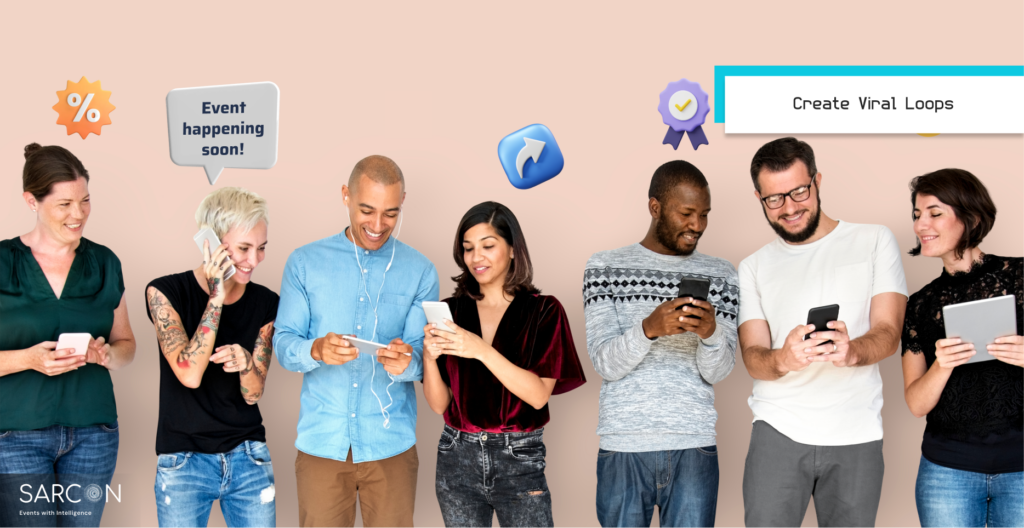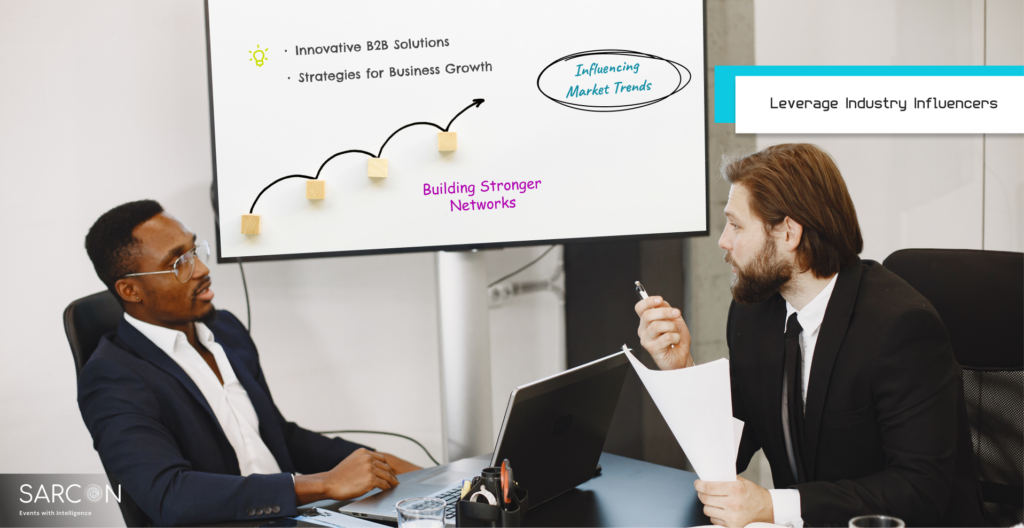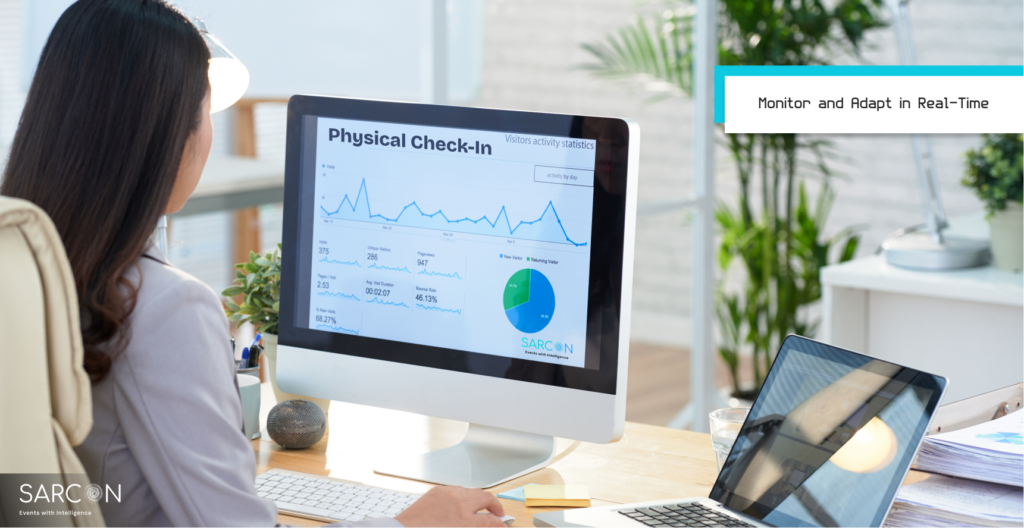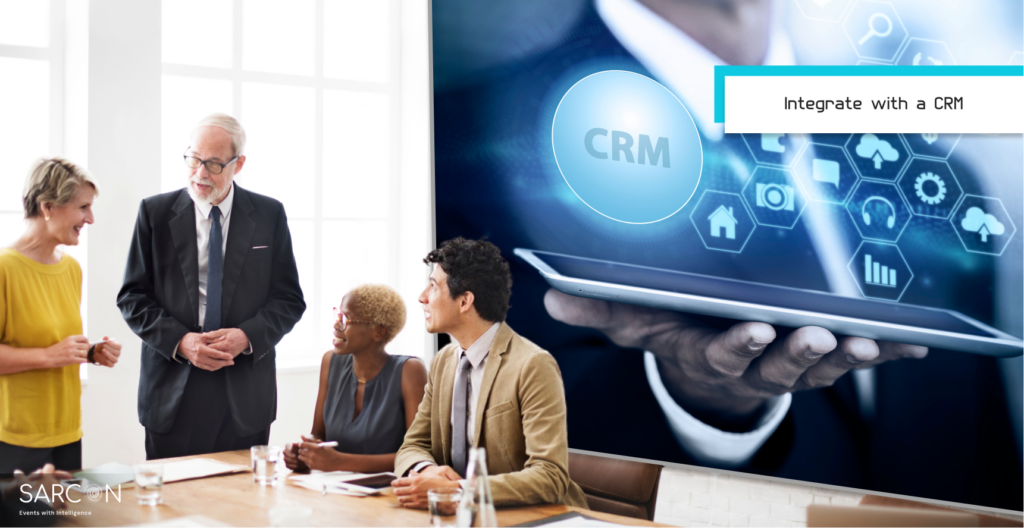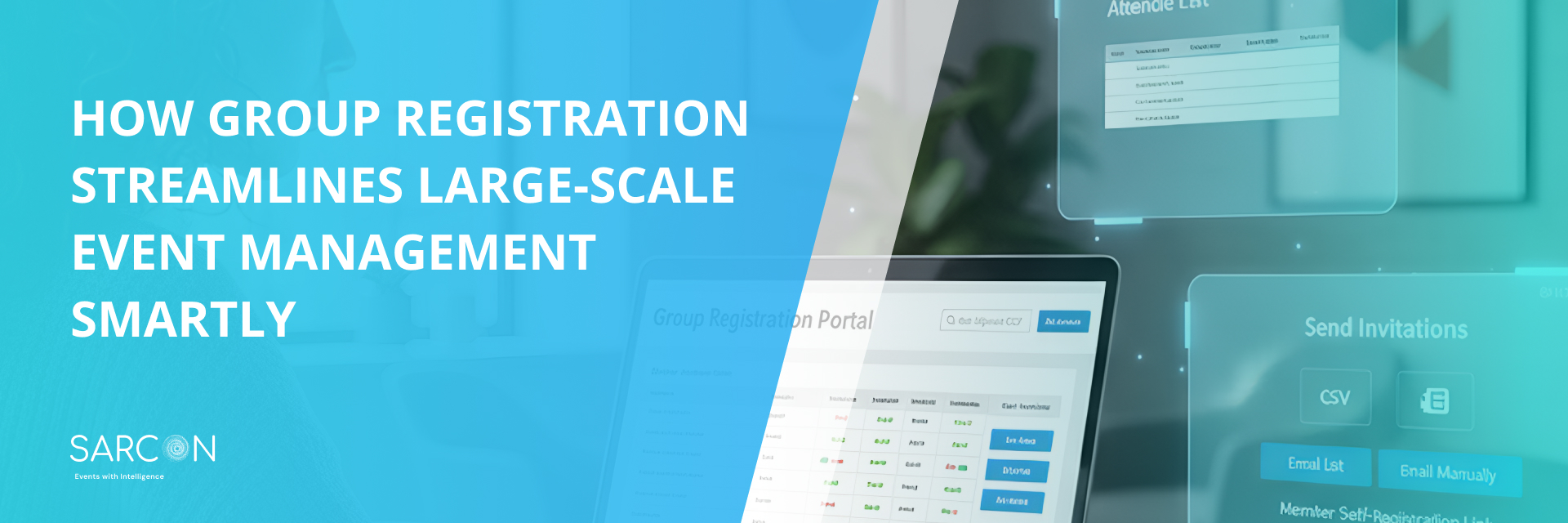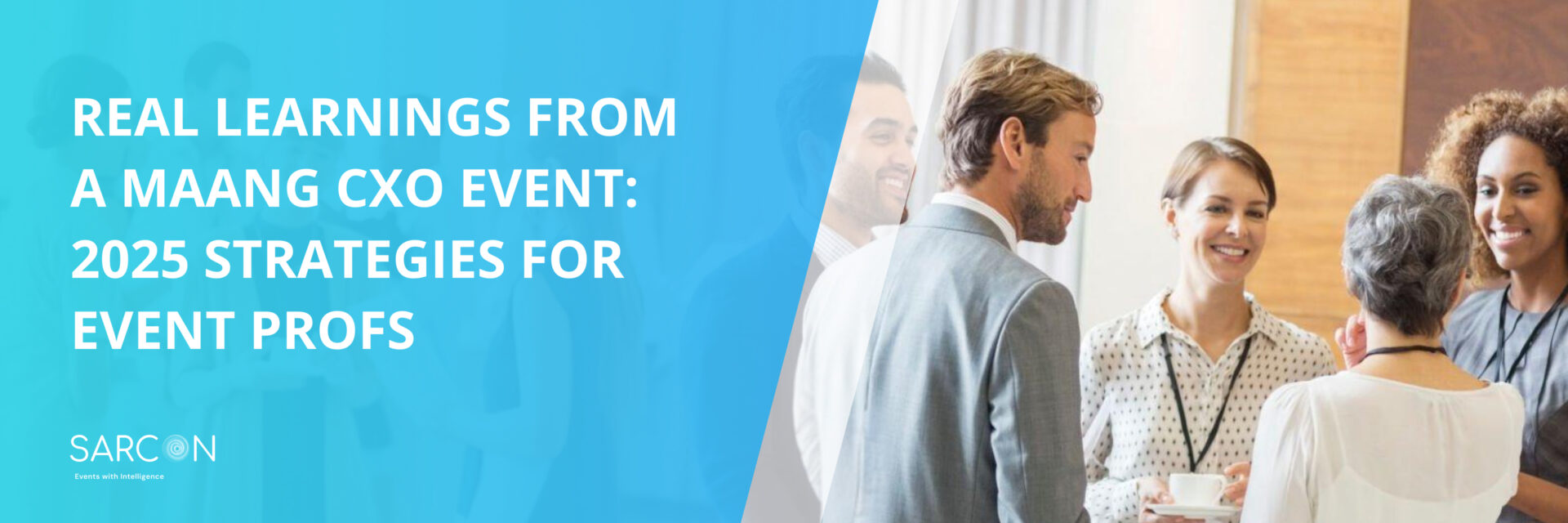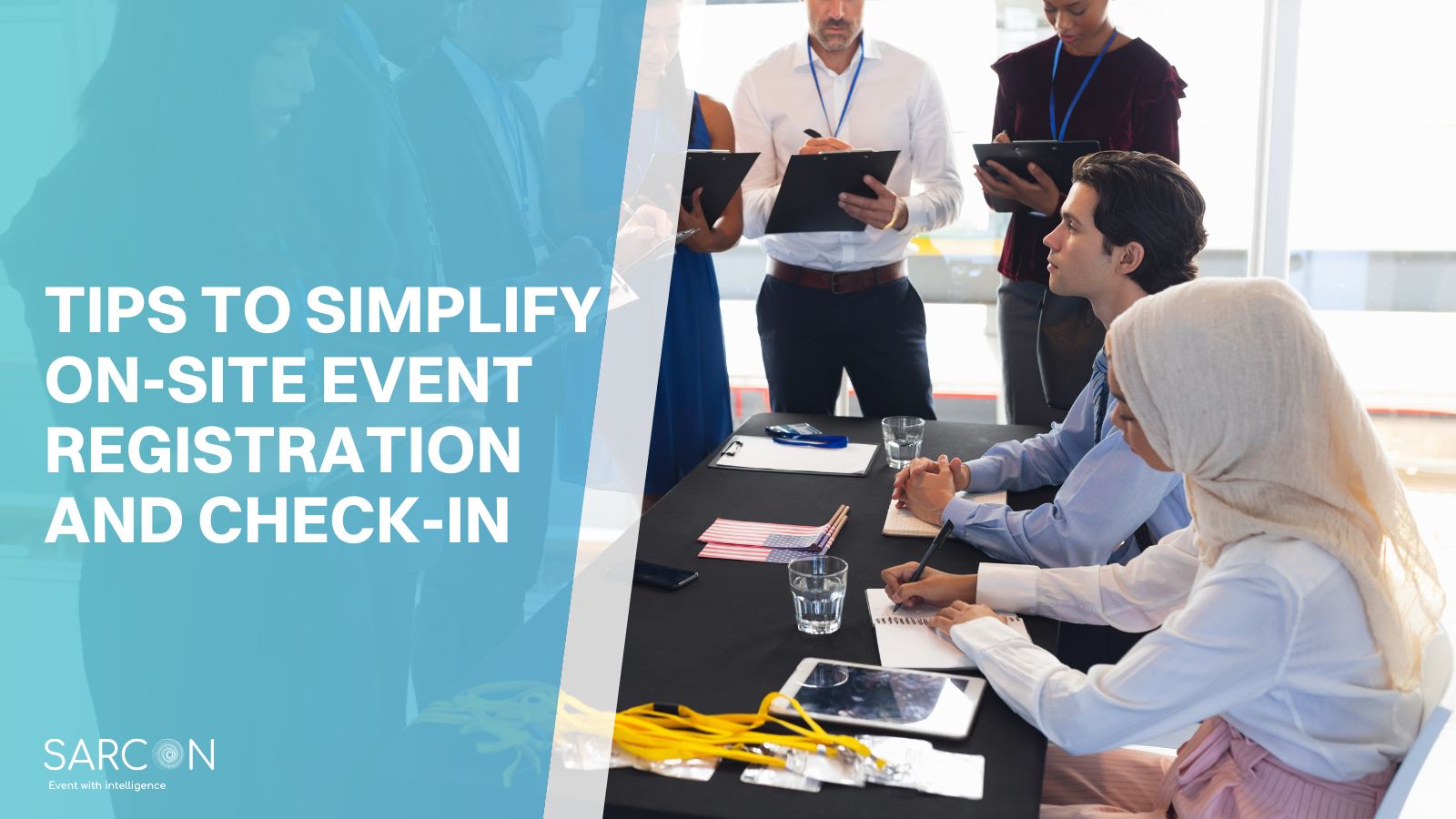Introduction: The biggest risk to any event is not having enough relevant registrations and attendees. You’ve put in months of work, meticulously planned every detail, and crafted a unique experience—only to face the nightmare of empty halls and low attendance. Fortunately, there are proven strategies you can use to drive up registrations and attendance, based on insights from over 1,000 top-performing events.
In this blog, we’ll explore a comprehensive framework to boost event registrations, covering everything from website optimization to influencer partnerships. These tactics are drawn from our experience in executing events globally, so let’s dive in!
While technically part of your website, the registration page deserves special attention due to its critical role in converting interest into actual sign-ups.
a) Strike the Right Balance with Form Fields
While your website and registration page form the backbone of your efforts, proactive outbound marketing can significantly boost your numbers.
a) Email Marketing
Strategic advertising can significantly boost your event’s visibility and drive registrations. Here’s how to make the most of various ad platforms:
a) LinkedIn Ads
Harness the power of social proof and peer influence to amplify your reach:
a) Implement Social Sharing
Influencer marketing isn’t just for B2C brands – it can be a powerful tool for event promotion:
a) Identify Relevant Influencers
Stay agile and responsive throughout your registration period:
a) Implement a Live Dashboard
Don’t let technical issues derail your success:
a) Stress Test Your Systems
CRM integration can streamline operations and enhance attendee engagement.
Streamline your operations and enhance your marketing efforts:
a) Automate Data Flow
Securing registrations is only half the battle—ensure they attend:
Boosting event registrations requires a multi-faceted approach combining strategic planning, technological savvy, and continuous optimization. While implementing all these strategies at once might seem overwhelming, remember that you can start with the low-hanging fruit and gradually layer on more sophisticated tactics. For those looking to operate at the highest level, consider partnering with a comprehensive event platform that offers most of these features out of the box. Many providers also offer white-glove setup services, allowing you to benefit from expert implementation without the learning curve. Now it’s your turn – what strategies have worked well for your events? What challenges are you still facing in driving registrations? Share your experiences in the comments below, and let’s continue to learn from each other! If you have any questions about implementing these strategies or need more detailed advice for your specific event, don’t hesitate to ask. Let’s make your next event a resounding success!
1. Craft a Professional, Conversion-Focused Website
Your event website is your digital storefront and the first impression potential attendees will have of your event. Here’s how to make it count: a) Cover the Basics (and Then Some)- Clearly communicate the when, where, and why of your event.
- Provide detailed attendee and exhibitor profiles to help visitors envision themselves at the event.
- Create industry-specific sections tailored to your event type:
Some examples:
- For tradeshows: Include a robust exhibitor section
- For corporate events: Highlight case studies
- For academic conferences: Feature an abstract submission area
- Invest in a visually appealing design that reflects your event’s brand and purpose.
- Ensure intuitive navigation and seamless user experience across all devices.
- Strategically design your site to funnel visitors towards the registration page.
 2. Optimize Your Registration Page for Conversions
2. Optimize Your Registration Page for Conversions
While technically part of your website, the registration page deserves special attention due to its critical role in converting interest into actual sign-ups.
a) Strike the Right Balance with Form Fields
- Avoid the extremes: Don’t ask for just name and email (a disservice to your sponsors), but don’t overwhelm with too many questions either.
- Consider implementing LinkedIn-based signup for business events. This smart hack allows you to gather quality attendee information while minimizing the number of questions asked.
- Set up early bird pricing to create initial momentum and FOMO (Fear of Missing Out).
- Create discount codes for use in targeted marketing campaigns.
- Share exclusive discount codes with industry influencers to extend your reach.
- Install Google Tag and Facebook Pixel on your registration page.
- Create retargeting campaigns to re-engage visitors who showed interest but didn’t complete registration.
- Remember: Retargeting ads are often cheaper and have higher conversion rates than cold outreach.
- Note: Your registration software should have the ability to set up these tags and pixels. It’s typically a two-minute task if the feature is available.
- Set up nurturing campaigns via email, SMS, and WhatsApp for those who started but didn’t complete registration.
- Consider using telecallers to reach out to these potential attendees, understand their hesitations, and guide them to completion.
- Implement heat mapping and user behavior tracking tools on your registration page.
- Identify potential sticking points: Are users dropping off after a certain section? Are there confusing elements causing frustration?
- Use these insights to continuously optimize your registration process.
 3. Harness the Power of Outbound Marketing
3. Harness the Power of Outbound Marketing
While your website and registration page form the backbone of your efforts, proactive outbound marketing can significantly boost your numbers.
a) Email Marketing
- Segment your audience and create targeted email campaigns.
- Use compelling subject lines and personalized content to increase open and click-through rates.
- A/B test different email formats and calls-to-action to optimize performance.
- Use SMS for time-sensitive promotions or last-minute reminders.
- Keep messages concise and include a clear call-to-action.
- Leverage the personal nature of WhatsApp to send more detailed information or answer questions.
- Consider setting up a WhatsApp Business account for automated responses and easy communication.
- Use telemarketing for high-value potential attendees or to follow up on warm leads.
- Train your team to handle objections and highlight the unique value proposition of your event.
- Consider experimenting with AI-based automated telemarketers. While not perfect currently, this technology could be the future of outreach.
 4. Maximize Your Advertising Impact
4. Maximize Your Advertising Impact
Strategic advertising can significantly boost your event’s visibility and drive registrations. Here’s how to make the most of various ad platforms:
a) LinkedIn Ads
- Ideal for B2B events and professional conferences.
- Use LinkedIn’s robust targeting options to reach decision-makers in specific industries or job roles.
- More expensive
- Great for reaching a wide audience, especially for consumer-focused events.
- Utilize Facebook’s lead generation ads to capture registrations directly within the platform.
- Implement a mix of search and display ads to cover both active searchers and passive audiences.
- Create a funnel approach:
- Use display ads for top-of-funnel awareness
- Target high-intent keywords with search ads for bottom-of-funnel conversion
- Use retargeting ads across platforms to stay top-of-mind with interested prospects.
- Upload your email lists to create custom audiences on social platforms for highly targeted messaging.
- While this falls into a grey area, there are ways to target attendees of competitor events.
 5. Create Viral Loops
5. Create Viral Loops
Harness the power of social proof and peer influence to amplify your reach:
a) Implement Social Sharing
- Use thirdparty tools like Snoball or Sarcon’s built-in event viralizer to encourage registrants to share their attendance on social media.
- Create visually appealing “I’m attending” graphics that attendees can easily post to their networks.
- Offer discounts or exclusive perks to attendees who refer others.
- Consider a tiered reward system for multiple referrals.
 6. Leverage Industry Influencers
6. Leverage Industry Influencers
Influencer marketing isn’t just for B2C brands – it can be a powerful tool for event promotion:
a) Identify Relevant Influencers
- Look for thought leaders, industry experts, and well-connected professionals in your event’s niche.
- Consider both macro-influencers (large following) and micro-influencers (highly engaged, niche audience).
- Offer influencers speaking opportunities, VIP access, or other exclusive perks in exchange for promotion.
- Provide them with unique discount codes to share with their followers.
- Implement affiliate tracking to measure the impact of each influencer.
- Use this data to refine your influencer strategy for future events.
 7. Monitor and Adapt in Real-Time
7. Monitor and Adapt in Real-Time
Stay agile and responsive throughout your registration period:
a) Implement a Live Dashboard
- Set up a real-time dashboard tracking registrations, website traffic, and key marketing metrics.
- Make this accessible to all relevant team members for transparency and quick decision-making.
- Review your numbers daily and identify trends or areas for improvement.
- Be prepared to pivot your strategy based on what the data tells you.
 8. Ensure Technical Robustness
8. Ensure Technical Robustness
Don’t let technical issues derail your success:
a) Stress Test Your Systems
- Ensure your registration page and website can handle traffic spikes.
- Work with a registration system that has proven experience with large-scale events.
- Have contingency plans in place for viral success – you don’t want your system crashing just as you’re going viral!
 9. Integrate with your CRM
9. Integrate with your CRM
CRM integration can streamline operations and enhance attendee engagement.
Streamline your operations and enhance your marketing efforts:
a) Automate Data Flow
- Ensure seamless integration between your registration system and CRM.
- Use this connection to trigger automated follow-ups, personalized communications, and detailed reporting.
- Leverage CRM data to create more targeted marketing campaigns.
- Use attendee history to personalize the event experience for returning participants.
 10. Convert Registrations to Attendance
10. Convert Registrations to Attendance
Securing registrations is only half the battle—ensure they attend:
- Attendance Boosting Techniques: Implement strategies to maximize show-ups, whether in-person or virtually.
- Separate Guide: We will cover this topic in detail in a future blog.
